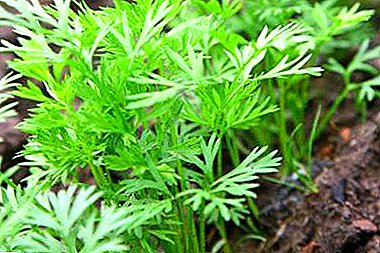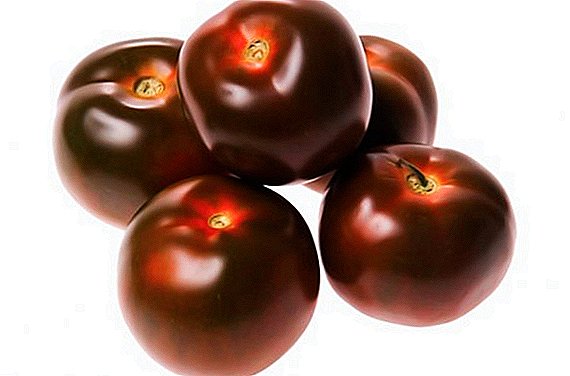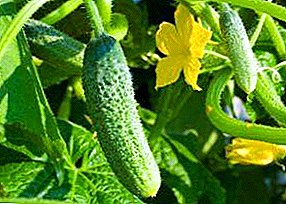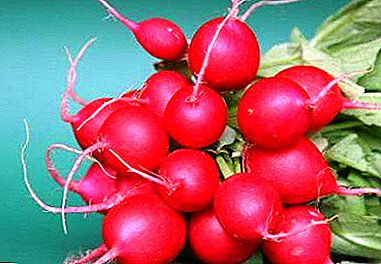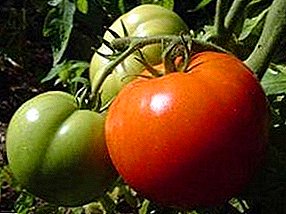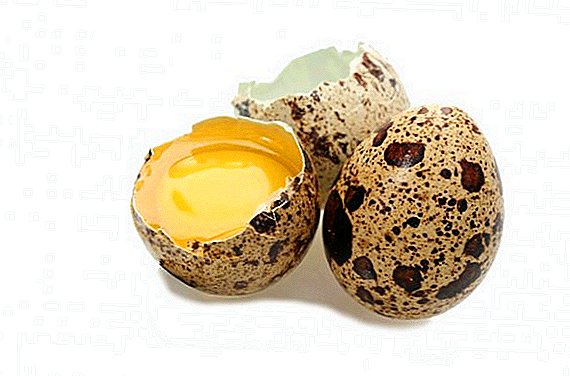 Today, goat breeding in households is becoming increasingly popular in order to produce milk. This article is devoted to the rules and methods of milking, as well as the maintenance and feeding of animals.
Today, goat breeding in households is becoming increasingly popular in order to produce milk. This article is devoted to the rules and methods of milking, as well as the maintenance and feeding of animals.
From what age can you milk a goat
Milking a goat with the aim of obtaining milk on a regular basis should be only after the appearance of offspring. It is often possible to encounter the fact that in young animals obtained from high-milky dairy breeds, an udder is formed before the first coating. But it is worth remembering that the early start of milking on an ongoing basis adversely affects the formation of the body of a young animal.
The development of a young individual is noticeably slowed down, since the nutrients necessary for the "construction" of organs and systems of the growing organism will be used to maintain lactation.  The early start of the milking process disrupts the formation of the udder, in the future inflammation in the mammary gland (mastitis) is not excluded, the udder loses its elasticity, droops, which entails a high degree of probability to injure it when walking.
The early start of the milking process disrupts the formation of the udder, in the future inflammation in the mammary gland (mastitis) is not excluded, the udder loses its elasticity, droops, which entails a high degree of probability to injure it when walking.
The question of whether a goat can be milked to a lambing, in particular, a primary flow, can be answered as follows: a young animal can only be milked if the udder becomes overfilled with milk, giving the goat great anxiety.
Did you know? Goat's milk is absorbed by almost all mammals, so many zoos specifically contain horned "nurse" in case of feeding orphaned cubs.
How many times a day you need to milk
The goat is milked twice a day: at 7 am and at 6 pm. Sometimes there is an intermediate milking, in which you can additionally get up to 0.5 liters of milk. It is imperative to adhere to the daily milking regime so that the milk return is maximized. After the female has licked, it should be milked 5 times a day. 
Preparing for milking
Preparation for milking can be divided into several stages:
- Wash your hands thoroughly, remove the rings (so as not to accidentally cut the udder), wear a clean bathrobe.
- Wash the udder with warm water, especially carefully - the nipples.
- Wipe the udder with a clean towel (paper napkins) in a gentle motion, as if "soaking".
- If the udder is overgrown with hair, it should be cut. This simplifies the care of the mammary gland and minimizes the risk of pathogens entering the milk during milking.
- For a more complete return of milk, you should massage the udder, after having previously lubricated the hands with a special cream.
Important! In the process of preparing the goat for milking, one should not make sharp movements, raise the voice, much less beat the animal. This can significantly reduce milk yield.
Goat milking methods
Milking is done in manual and hardware ways.
Hands
There are 3 methods of manual milking, which depend on the size of the udder:
- Pugilistic way. The technique is recommended for milking animals with a large udder. The nipple is squeezed at the base of the thumb and forefinger. Make several rhythmic clicks to drain the first portions of milk containing pathogenic microbes. Next, the fist completely wrap and squeeze the nipple and rhythmic movements produce milking.
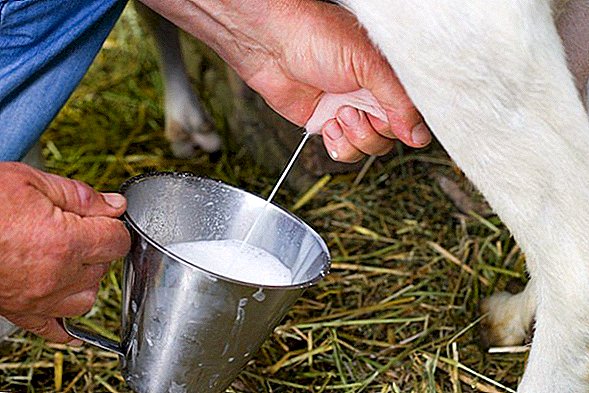
- Pinch method. It is used in the case of milking goats with a low udder and short nipples. The technique does not differ from the fist one, only fingers are involved instead of a fist.
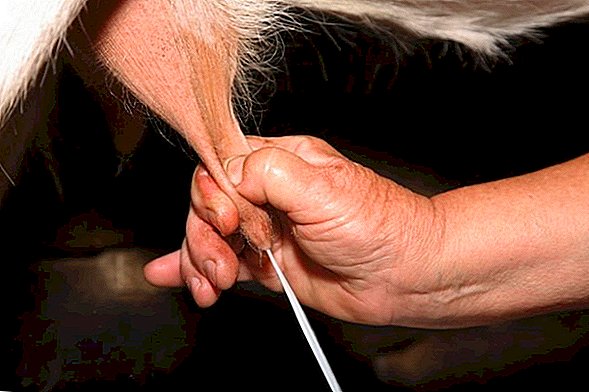
- Combined (mixed) method. The most popular milking technique. The method consists in the fact that most of the milking is done with a fist, and the milk residues are given by fingers. The combined method allows you to extract the milk product from the nipples.
Milking machine
If the farm contains more than 5 animals, it is worth considering the possibility of purchasing a milking machine. It should be used strictly according to the instructions 2 times a day, applied to one animal.
Important! During the goat launch period, it is necessary to carefully monitor the condition of its udder. When it swells, milking must be resumed to prevent the development of mastitis.
In general terms, the process is as follows:
- The udder is prepared in the same way as before milking by hand.
- Before you put on the nipples previously disinfected (as indicated in the instructions for the device) cups of the device, you should pry the first few streams of milk with your hands.
- Cups are put on the nipples, after the occurrence of a vacuum, the milking process begins directly.
- After the milk dries out, the apparatus is turned off, the cups are removed.

Advantages of the milking machine:
- about 20 individuals can be milked in one hour;
- milking is made, as they say, "to the last drop", while the animal is securely fixed;
- ease of use.
Post Milking Actions
The post-milking algorithm is as follows:
- After milking, the udder should be massaged easily, then smeared with petroleum jelly or a special cream to prevent the formation of cracks.
- Refined milk should be immediately cooled to prevent premature souring, the development of pathogenic microflora.
- Check whether milking is completed. This can be visually determined by udder. It loses its elasticity, becomes sluggish, sags.
Did you know? The oblong form of the pupils gives the goats a 340-degree view, without turning their heads.
When to stop before lambing
Goat's pregnancy lasts 150 days. If she does not belong to the dairy breed and this is her first lambing, do not produce milking. A pregnant dairy goat is milked as before during the first 3 months after coating. The number of daily feeds begin to gradually decrease from the 4th month of pregnancy, bringing their number to 1 time in 2 days.  After a single portion of the milk produced is 1 cup, the goat is started, i.e. it is stopped to be milked. A month before the expected lambing lactation should be completely stopped. This is done so that the prenatal development of the fetus (or several) takes place fully, since the process of milk production requires the consumption of nutrients and vitamins.
After a single portion of the milk produced is 1 cup, the goat is started, i.e. it is stopped to be milked. A month before the expected lambing lactation should be completely stopped. This is done so that the prenatal development of the fetus (or several) takes place fully, since the process of milk production requires the consumption of nutrients and vitamins.
How to break after lambing
After the appearance of the babies, the goat must be split up, otherwise the lactation may die out. If an animal has its first birth, then one month before lambing it should be taught to follow milking by stroking, lightly massaging the udder, so that later the milking process can occur without problems (nervous behavior, kicking).
Find out more about how much milk a goat gives per day.
In case of separate keeping of young cattle and goat, the female is milked 5 times a day and the goats are fed with milk from the bottle for the first month of life. Starting from two months of age, cubs are transferred to milk powder and adult food.
How to increase milk yield
The main reasons for the fall in milk production in goats are:
- a sharp change in the diet of feeding and milking regime;
- non-compliance with the standards of maintenance and hygiene.
To increase milk production, animals should be fed with chopped root vegetables and vegetables, fresh hay and twigs, brooms (in winter). A very beneficial effect on lactation is the use of goat turnips and chamomile hay during the flowering period.  But to include raw potatoes in the diet is not worth it, because from him the performance of milk drops sharply. In everyday nutrition, cereals, legumes, vitamin and mineral complexes must be present. However, it is undesirable to overfeed animals, since in obesity milk productivity decreases significantly.
But to include raw potatoes in the diet is not worth it, because from him the performance of milk drops sharply. In everyday nutrition, cereals, legumes, vitamin and mineral complexes must be present. However, it is undesirable to overfeed animals, since in obesity milk productivity decreases significantly.
You will be interested to know why the goat stopped giving milk.
The room where the goats are kept should be warm (in winter, the temperature in the barn should not be below + 6 ° C). The animals are kept dry and clean, with good air ventilation. The litter is changed regularly, and all livestock is periodically shown to a veterinarian.
What will happen if you do not milk the goat
If the milking mode is not followed, lactation may decrease, and in the most extreme case the goat will stop producing milk. In addition, milk milk goats often suffer from mastitis, udder swelling and inflammatory nipple diseases.  Taking care of a domestic dairy goat is a troublesome, responsible process, and most importantly: everyday. It requires significant labor and material investments. But with proper and methodical fulfillment of the conditions of keeping these animals, the result will be excellent - tasty nutritious milk, cottage cheese, cheeses will be daily present in your diet.
Taking care of a domestic dairy goat is a troublesome, responsible process, and most importantly: everyday. It requires significant labor and material investments. But with proper and methodical fulfillment of the conditions of keeping these animals, the result will be excellent - tasty nutritious milk, cottage cheese, cheeses will be daily present in your diet.





